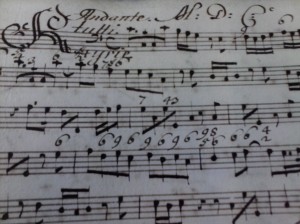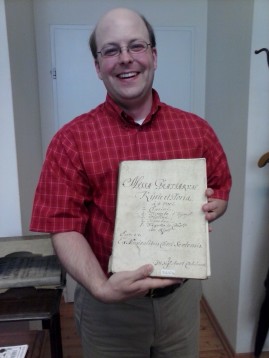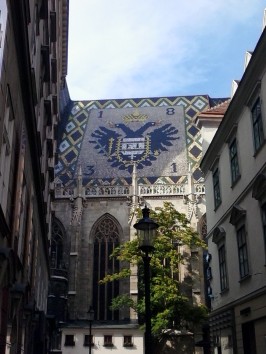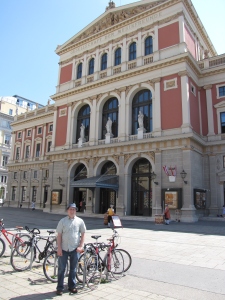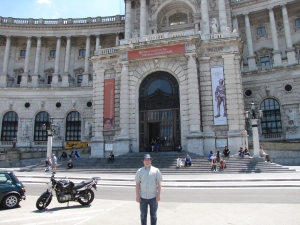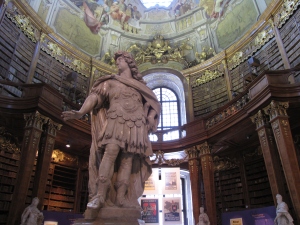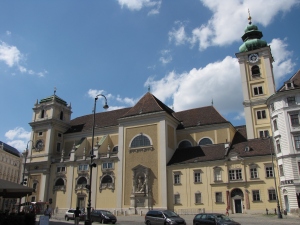Today I finished my work with the performance parts of Missa gratiarum which are in the Schotten Archive.
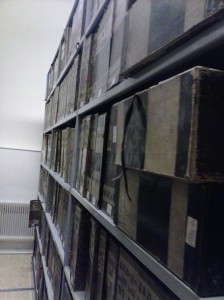 I am convinced now that the performance parts where copied at the Schotten from the autograph. While I have already written a little about this assumption, today I compared the script on the cover to script with in the parts. They are a match so it is safe to say the same scribe that created the parts also created the covers. I had originally thought that these parts might be the original performing parts since the original Hofkapelle parts are missing from the Hofkapelle archive in the National Library. I was thinking that maybe these were the original parts brought to the Schottenstift and given a new Schotten folder, but after comparing the script on the cover with the script in the parts I do not think this is the case. The parts also seem to follow a Schotten performance practice of a slightly smaller instrumental ensemble. A missa solenne of Caldara often has additional parts which double the voices, a sign of the opulence of the Chapel Imperial. These additional parts include cornetto, viole, and tiorba. While these parts are optional they do show up in the Hofkapelle parts of other masses in this style and the use of viole is indicated in the autograph score. Using my comparison of Missa gratiarum with other Caldara missa solenne, my edition will attempt to reconstruct the original performing forces for the Hofkapelle performance of Missa gratiarum.
I am convinced now that the performance parts where copied at the Schotten from the autograph. While I have already written a little about this assumption, today I compared the script on the cover to script with in the parts. They are a match so it is safe to say the same scribe that created the parts also created the covers. I had originally thought that these parts might be the original performing parts since the original Hofkapelle parts are missing from the Hofkapelle archive in the National Library. I was thinking that maybe these were the original parts brought to the Schottenstift and given a new Schotten folder, but after comparing the script on the cover with the script in the parts I do not think this is the case. The parts also seem to follow a Schotten performance practice of a slightly smaller instrumental ensemble. A missa solenne of Caldara often has additional parts which double the voices, a sign of the opulence of the Chapel Imperial. These additional parts include cornetto, viole, and tiorba. While these parts are optional they do show up in the Hofkapelle parts of other masses in this style and the use of viole is indicated in the autograph score. Using my comparison of Missa gratiarum with other Caldara missa solenne, my edition will attempt to reconstruct the original performing forces for the Hofkapelle performance of Missa gratiarum.
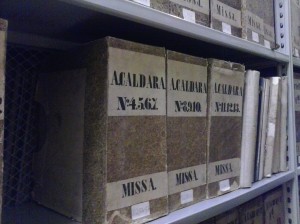

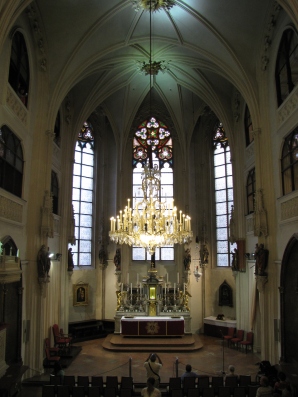
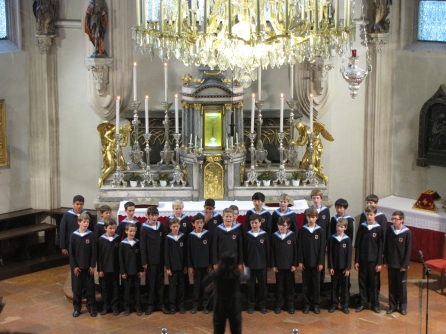
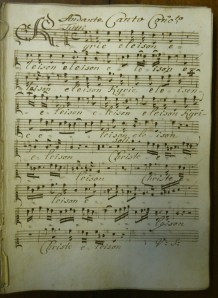 Here is the first page of the soprano concertist’s part. A concertist sang or in the case of instrumentalists played in a small group, usually as soloists. The larger ensemble was called the ripieno which sang and played when the composer wanted a fuller sound. This naturally created the terraced dynamics of the Baroque and created the drama of the concertato style, a small ensemble contrasted with a larger ensemble. You can see that vocalists in Caldara’s period were only given their part to sing instead of being able to see every singer’s part as in a modern vocal score. What I have discovered by going through these performance parts is that they were copied from the autograph score. Certain details that are only found in the autograph score are found in these parts and not the imperial copy of the score. So the autograph probably was copied for the Schotten sometime after Caldara’s death in 1736 and before it found its way into Archduke Rudolf’s music collection. Here is a detailed snapshot of one of the two figured bass parts.
Here is the first page of the soprano concertist’s part. A concertist sang or in the case of instrumentalists played in a small group, usually as soloists. The larger ensemble was called the ripieno which sang and played when the composer wanted a fuller sound. This naturally created the terraced dynamics of the Baroque and created the drama of the concertato style, a small ensemble contrasted with a larger ensemble. You can see that vocalists in Caldara’s period were only given their part to sing instead of being able to see every singer’s part as in a modern vocal score. What I have discovered by going through these performance parts is that they were copied from the autograph score. Certain details that are only found in the autograph score are found in these parts and not the imperial copy of the score. So the autograph probably was copied for the Schotten sometime after Caldara’s death in 1736 and before it found its way into Archduke Rudolf’s music collection. Here is a detailed snapshot of one of the two figured bass parts.